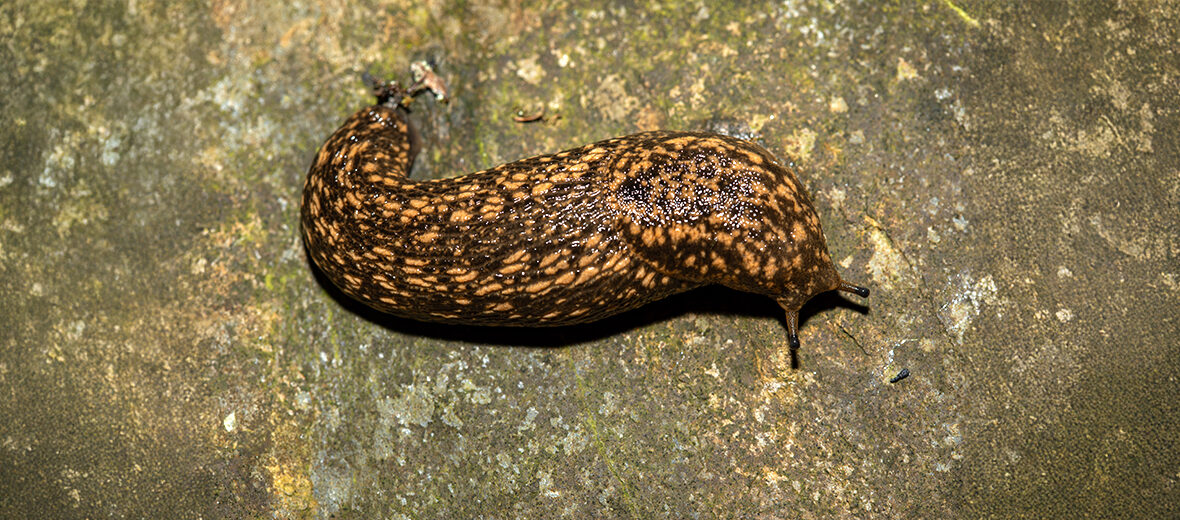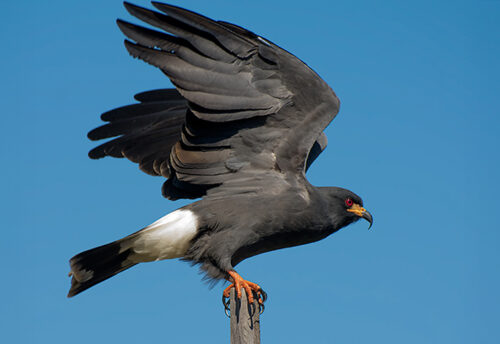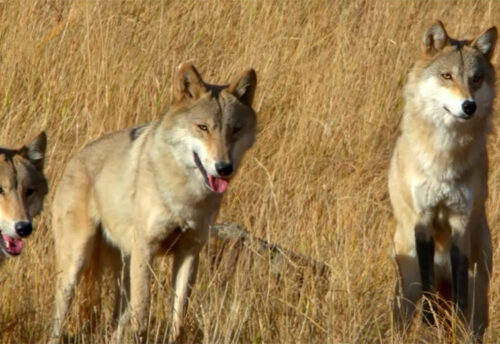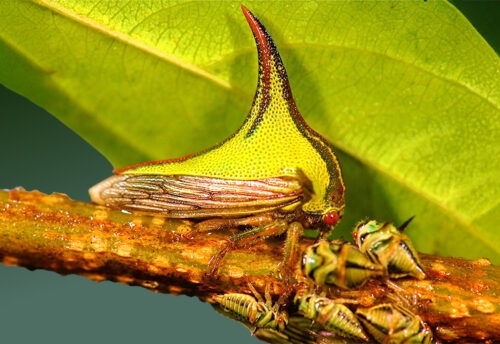
The Kerry slug, aka Kerry spotted slug, is a medium-to-large sized, air-breathing land slug that hails from the family of roundback slugs, Arionidae. Even though these critters are found in south-western Ireland—including County Kerry, they are more widespread in northwestern Spain and central-to-northern Portugal. They face the threats of habitat loss and destruction at the hands of the logging industry, wood collecting, the burning of peat forests, and conifer afforestation (afforestation is the creation of a forest where none previously existed in recent history); invasive Rhododendron species; air pollution; and land pollution. However, these gastropods are abundant enough to be listed as Least Concern by the IUCN. Their population trend is listed as stable.
First the Stats…
Scientific name: Geomalacus maculosus
Weight: Up to .09 ounce
Length: Up to 4.7 inches
Lifespan: Up to 7 years
Now on to the Facts!
1.) Fungi, lichens, liverworts, and mosses are all on the menu.
2.) They have 2 sets of retractable tentacles, the upper pair of which has eyes on their tips.
3.) Kerry slugs are placed in the genus Geomalacus, which translates to “earth mollusc”.
4.) Their scientific name, Geomalacus maculosus, translates to maculosus meaning “spotted” which is translated from the Latin word macula, “a spot”.
5.) These slugs were first described by the Irish biologist George James Allman in 1843.
But wait, there’s more on the Kerry slug!
6.) Kerry slugs have 2 color morphs, brown and black. In Ireland the black morph appears in open habitats and the brown morph appears in woodlands.
7.) The Kerry slug is a hermaphrodite (having sexual characteristics that are not clearly male or female), as are all pulmonates.
Did you know…?
Within the mantle, most land slugs have the remnants of what was once a larger, external shell. Slugs have evolved from snails approximately 56 million years ago during the early Eocene epoch.
8.) Up to 30 eggs are laid that hatch in up to 8 weeks.
9.) These slugs possess a radula which is 5⁄16 inches long and 1⁄16 inches wide, and houses 240 slightly curved, transverse rows of denticles (tiny teeth).
10.) There has been some theories that Kerry slugs were introduced to Ireland from Iberia by prehistoric humans.
But wait, there’s still more on the Kerry slug!
11.) They are primarily nocturnal (active at night).
12.) While most land slugs retract the head and contract the body when threatened, but stay strongly attached to the substrate, the Kerry slug retracts its head, lets go of the substrate and rolls itself into a ball. This is unique only to this species.
Did you know…?
Since 1990, these slugs have been successfully bred in captivity. However, their lifespan rarely exceeds 3 years.
13.) In captivity, these critters have been documented becoming carnivorous and feasting on snails.
14.) Like so many other slugs, they suffer from parasitism by nematodes.
15.) Because of their perceived rarity and their restricted distribution, these slugs are protected under the Convention on the Conservation of European Wildlife and Natural Habitats (Bern Convention), EIS Bern Invertebrates Project.
Now a Short Kerry Slug Video!
Be sure to share & comment below! Also, check out the Critter Science YouTube channel. Videos added regularly!

Want to suggest a critter for me to write about? Let me know here.
Some source material acquired from: Wikipedia & IUCN
Photo credit: Foto Conquilha



